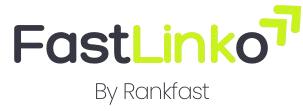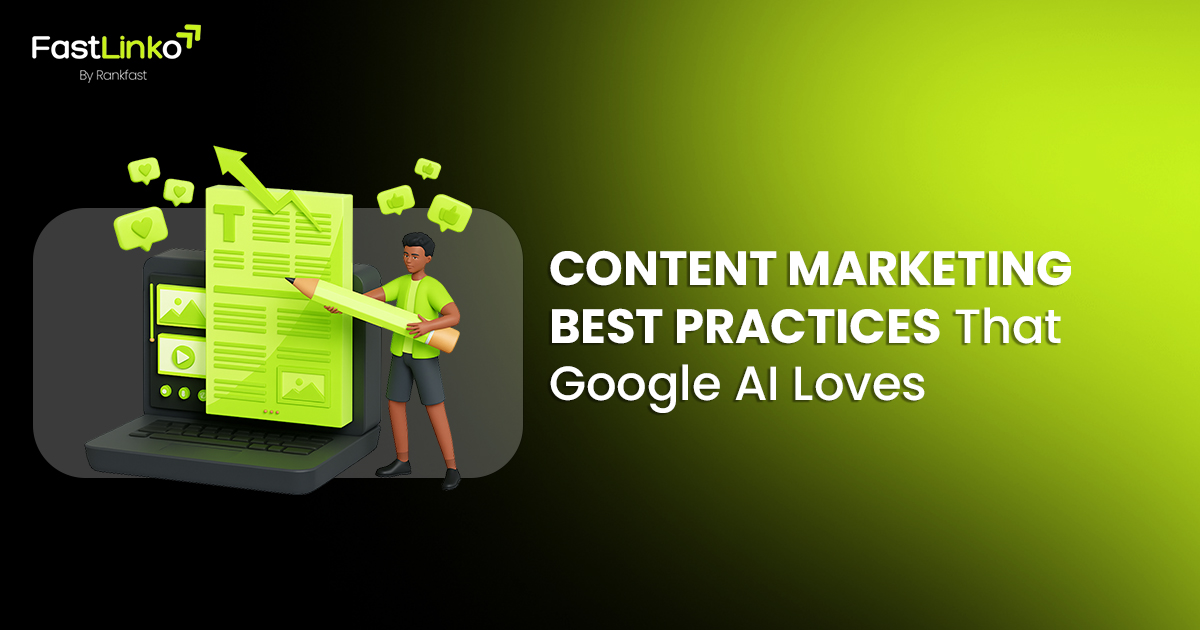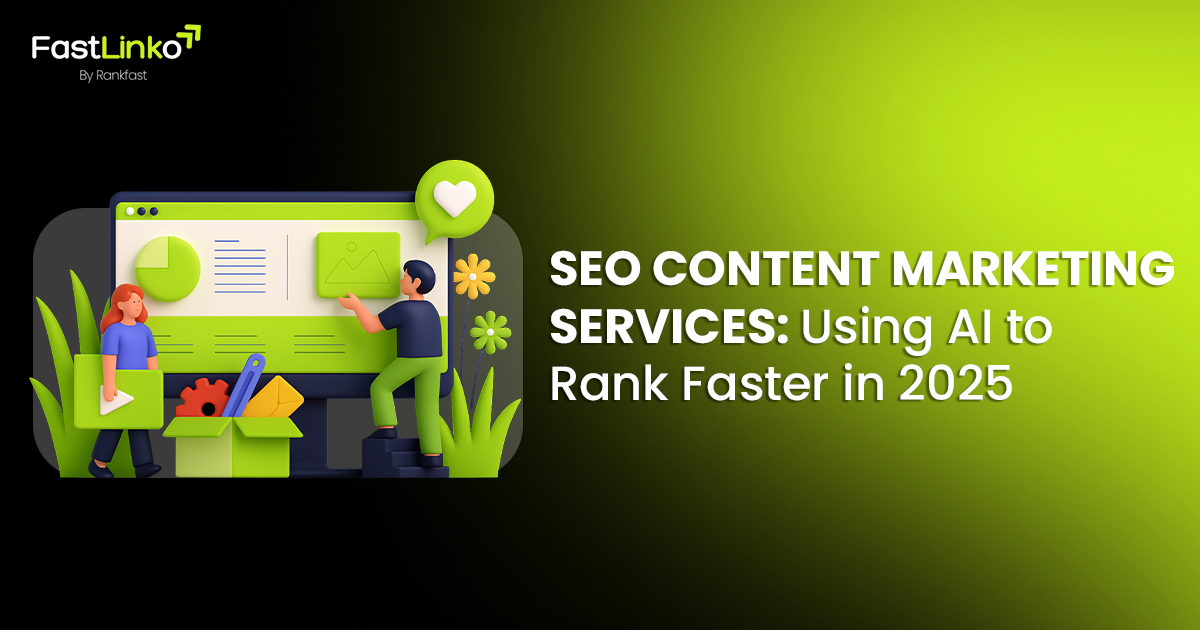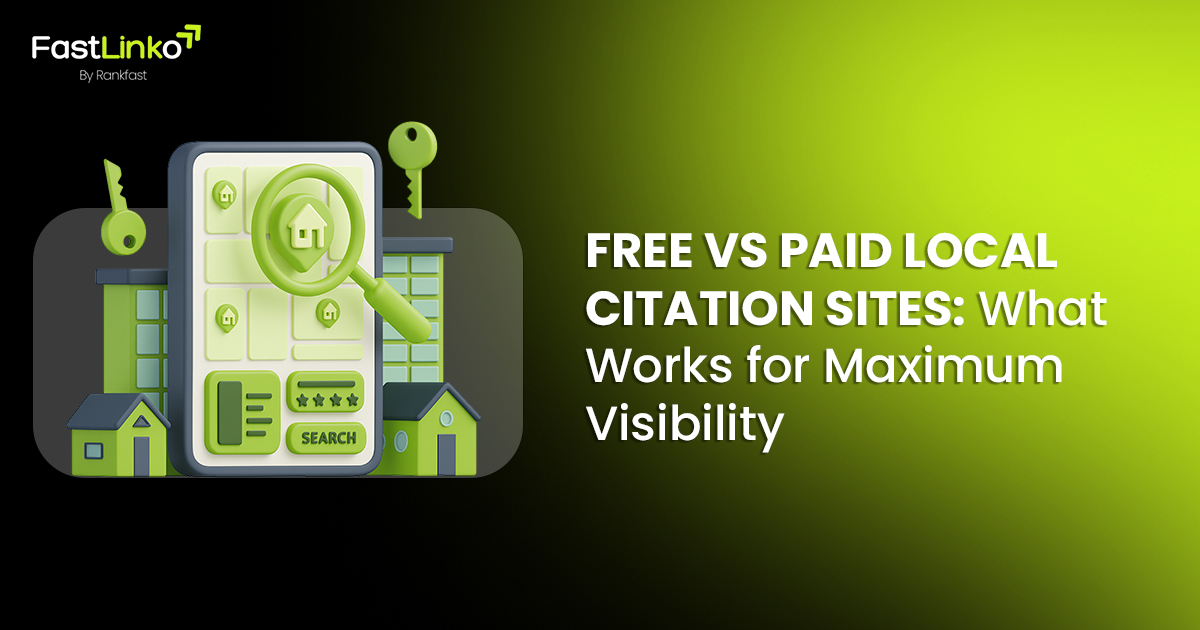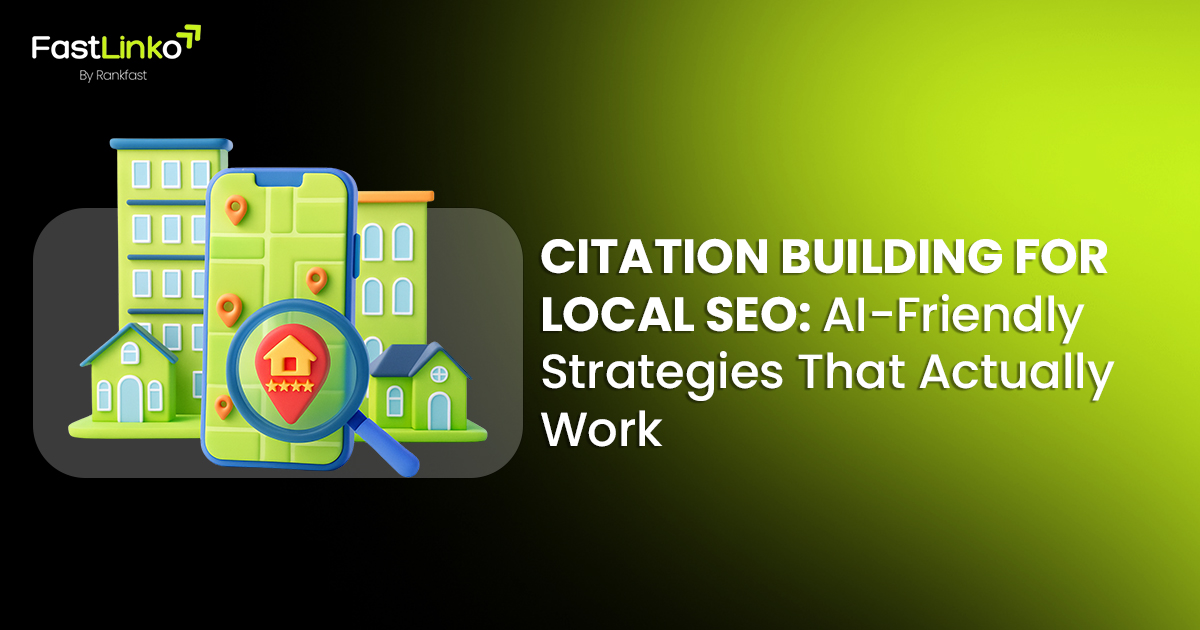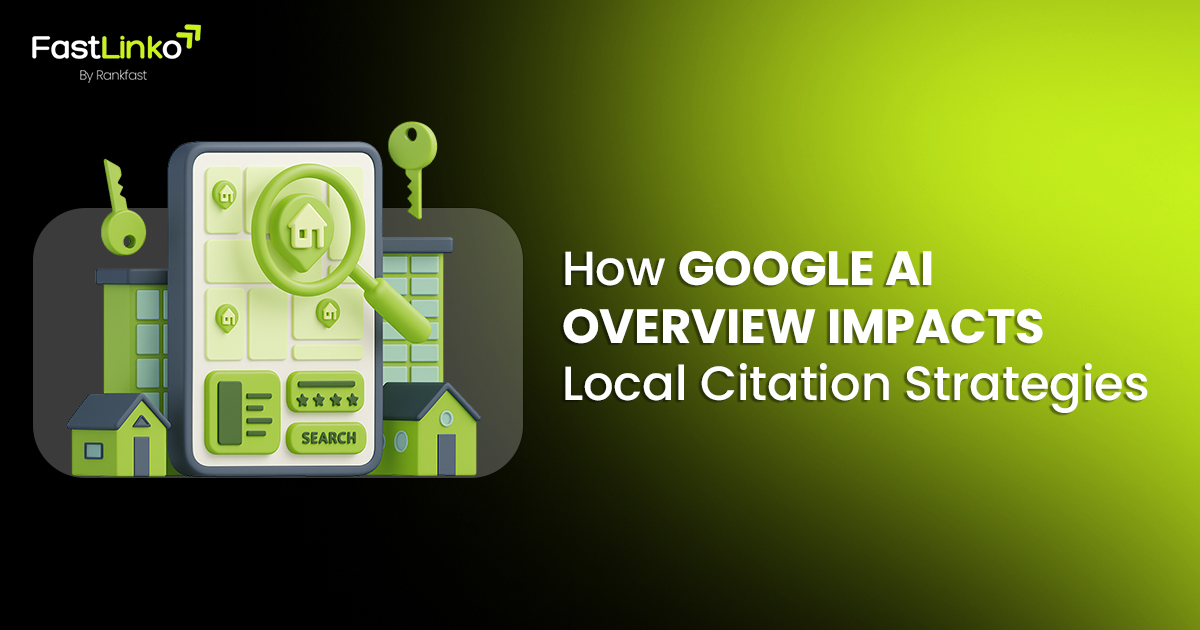
Link Building for eCommerce: Tiered Strategies That Scale
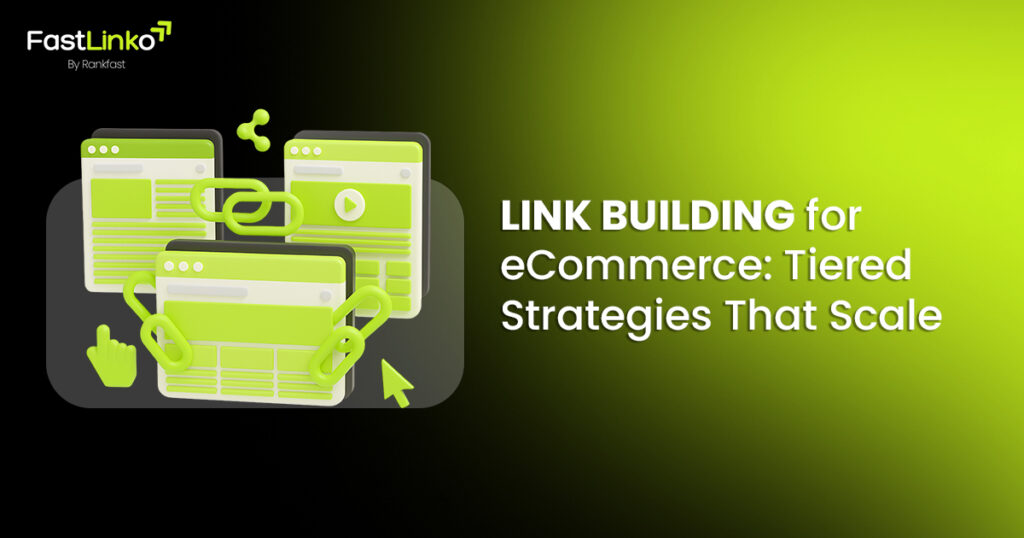
About Author
Recent post
SEO Content Marketing Services: Using AI to Rank Faster in 2025
Free vs Paid Local Citation Sites: What Works for Maximum Visibility
How Google AI Overview Impacts Local Citation Strategies
Categories
For the eCommerce industry, well-placed links work like digital infrastructure.
Link Building lays the foundation for your brand’s online presence. It has become the backbone of visibility in 2025. Its impact goes far beyond improving search engine rankings. It builds recognition and trust among prospective users. Most importantly, it creates a stream of steady traffic that translates into higher sales.
Search engines now reward eCommerce stores that invest in meaningful connections. Links placed with context, backed by authority, and aligned with the target user’s intent act as pathways to qualified buyers, not just casual clicks. Together, these factors create an ecosystem where every backlink signals reliability to algorithms and buyers alike.
From developing website links through manual link building to creating partnerships, content and assuring quality, every single decision influences online discoverability and conversion. For brands, backlinks are way more than metrics on a dashboard now. High authority link building is a durable asset designed to grow.
Let’s explore how eCommerce firms can outsource to link building consultants like Fastlinko and turn their links into a long-term competitive advantage.
What is Tiered Link Building?
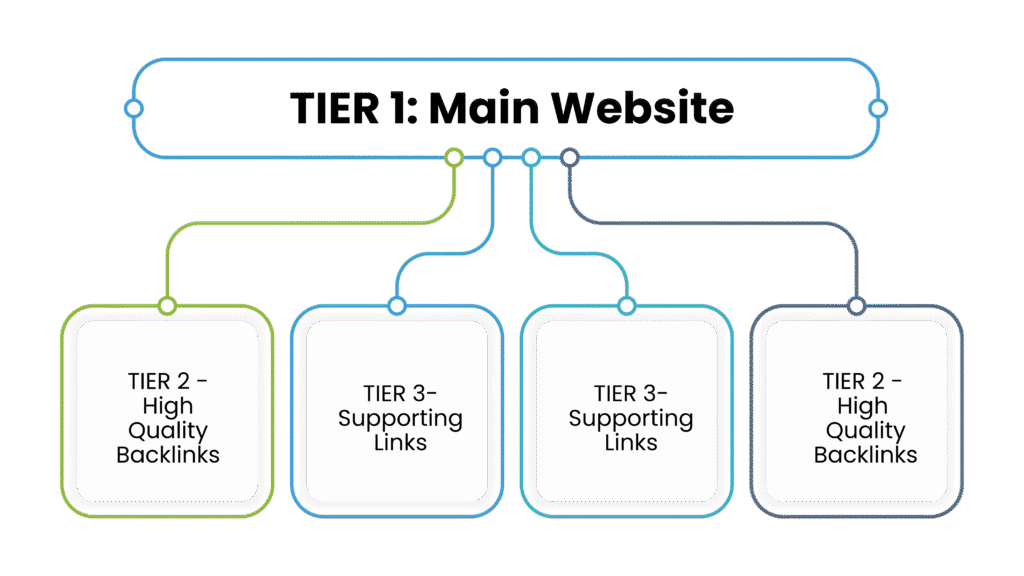
Tiered link building works like a pyramid. The main link to your website sits at the top. It is backed by a base of secondary backlinks and tertiary anchor links that amplify its strength.
Instead of pointing every backlink directly to your website, this strategy creates levels of support. Each layer strengthens the one above it, which eventually flows to your main site. The compounding effect flows in a controlled and sustainable manner. Your best placements grow stronger, while weaker signals are kept at a safe distance.
The tiers of link building are as follows:
Tier 1: Direct High-Value Backlinks
The first layer of links is the most relevant. These are direct, high-quality backlinks that point straight to the most important pages. Usually these include product listings, flagship content, category pages, or thought-leadership content.
Tier 1 of ecommerce link building strategies links touch your business pages hence they carry the highest impact. They must be carefully selected, relevant, and high quality. These links usually come from respected industry blogs, credible media mentions, or partnerships with suppliers and associations. Tier 1 links sit at the foundation of link building for eCommerce.
Tier 2: Reinforcing Links
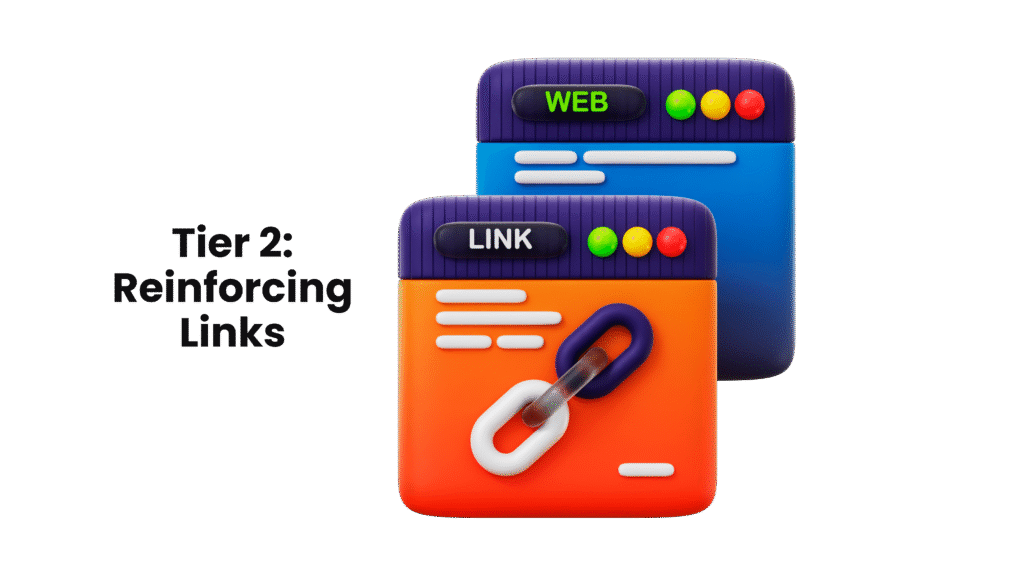
Tier 2 links do not point to your site directly. Instead, they strengthen your Tier 1 placements. For instance, a niche directory linking to a blog that mentions your brand, or an influencer sharing an industry article that features your products. The job of Tier 2 links is to build credibility for Tier 1 links. They are designed to help Tier 1 links rank higher and stay effective for longer periods.
Tier 3: Amplification Layer
This is the amplification stage. The third layer focuses on visibility. Tier 2 placements are circulated across forums, social media, and syndication platforms. These links never connect directly to your website, keeping your website insulated from risk. Their role is to keep Tier 2 content visible and active, which in turn reinforces Tier 1, and ultimately your website. They move the flow of readers upward in a controlled and secure manner.
For eCommerce companies competing in crowded markets, tiered link building offers both stability and growth. Link building specialists like Fastlinko transform backlinks from temporary wins into digital assets that strengthen with time.
Why Tiered Link Building Matters
Ecommerce link building strategies multiply the value of your strongest backlinks while keeping your brand protected. Instead of chasing scattered backlinks, it creates an organised system. Each layer builds strength for the one above it. In the eCommerce industry, hundreds of companies & product pages compete for attention, building tiered links makes your brand stand out.
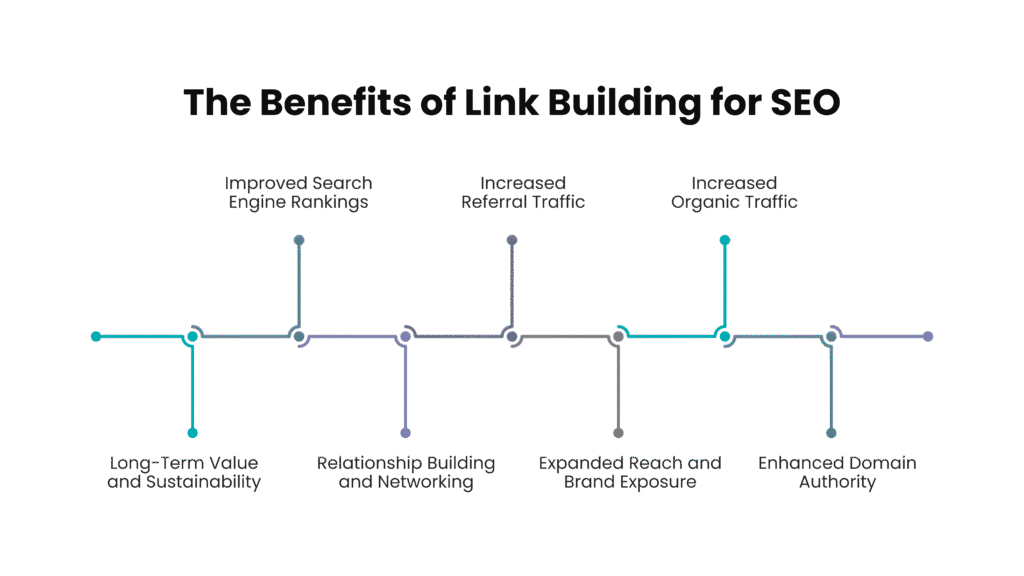
It benefits firms by:
- The Compounding Effect:
Tier 1 backlinks are placed across the high-credibility sources like directly on industry blogs, media sites, or supplier portals. A handful of these backlinks become even more powerful when supported by Tier 2 and Tier 3 layers.
Instead of chasing hundreds of scattered links, brands should focus on building fewer, stronger placements and let the tiered ecosystem amplify their reach.
- Risk Control:
Your Tier 1 placements include the cleanest and most reliable backlinks. They connect directly to business pages.
Secondary and tertiary layers, on the other hand, remain insulated. They keep passing strength upward without exposing your site to lower-quality signals. This keeps your “money pages” safe while benefiting from the ripple effect of broader visibility.
- Natural Growth Patterns:
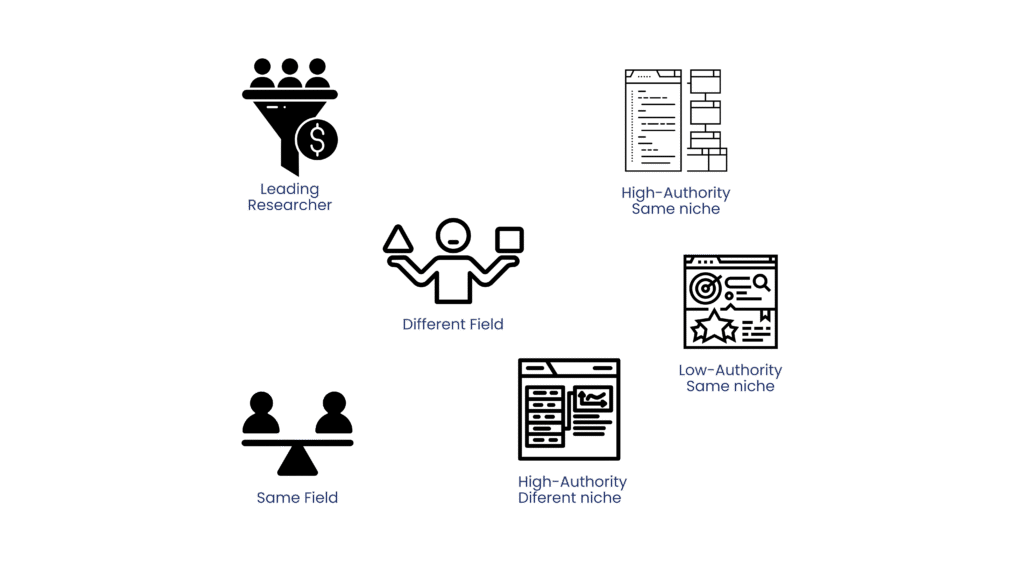
Tiered link building mirrors the same compounding pattern as real digital authority.
A main article or product page earns a direct link. Other sites then reference that link, and the content is later shared in forums or social media.
This layered activity is the core of link building. It looks natural to search engines and builds trust with users.
- Scalability:
ECommerce stores with vast catalogues can’t build top-tier links for every product. Instead, tiered link building focuses on uplifting flagship categories. Secondary layers are supposed to keep those links strong over time. This delegation creates a scalable system. Resources are used wisely, and visibility grows along with the store.
Ecommerce link building strategies are not just about higher rankings. They are a way to build reliability, reduce risks, and create digital assets that grow stronger year after year. Let’s find out how outsourcing these strategies to specialists helps businesses scale without sacrificing quality.
Link Building for eCommerce: Tiered Strategies That Scale

For growing eCommerce brands, a tiered link building plan is less about chasing new links and more about compounding returns. It works the best when treated as an ongoing investment, not a one-time campaign.
Instead of collecting random backlinks , the focus lies on creating a layered system where every tier reinforces the credibility and visibility of your most valuable sites. E-commerce link building strategies maximise ROI without constantly restarting campaigns.
Here’s how a structured Tiered Link Building Plan works:
- Identify Target Pages and Keywords
The first step is clarity. Not every page deserves equal attention. The focus for tiered link building should lie on categories with the highest commercial impact like bestsellers, seasonal launches, or service lines that have a high repeat purchase rate.
The next step is zeroing in on your ‘power pages.’ These are not just product listings. A power page combines strong SEO keywords with clear business values. It may be for a flagship category page or a long-form buying guide. Tying backlinks to such pages guarantees that link equity translates into higher traffic and stronger conversions.
- Audit Competitor Backlink Profiles
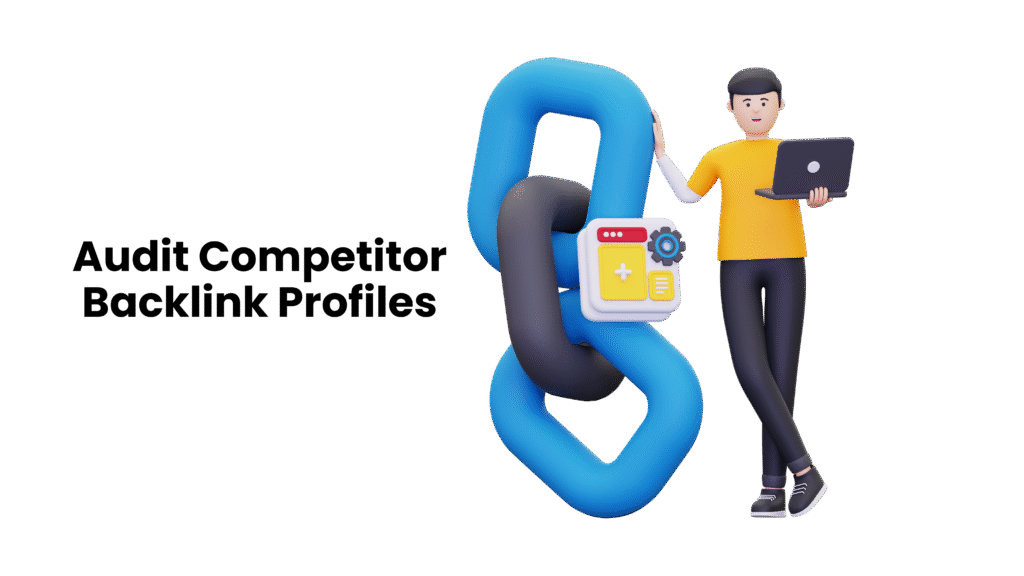
Competitors often reveal where opportunities lie. By analysing backlink profiles through tools like Ahrefs or SEMrush, you can identify patterns:
- Which publishers repeatedly endorse them.
- What type of content consistently earns links.
- Where gaps exist that your brand can occupy.
The objective isn’t to replicate your competitors but to stand out among the crowd. Competitor backlinks reveal where viewer’s attention flows. The true advantage however, comes from improving on those foundations.
By adapting link building tiers to your brand’s positioning and investing in higher-quality relationships, you create link equity that compounds. A skilled consultant’s effort targets influence, not clutter.
- High-Authority Tier 1 Links
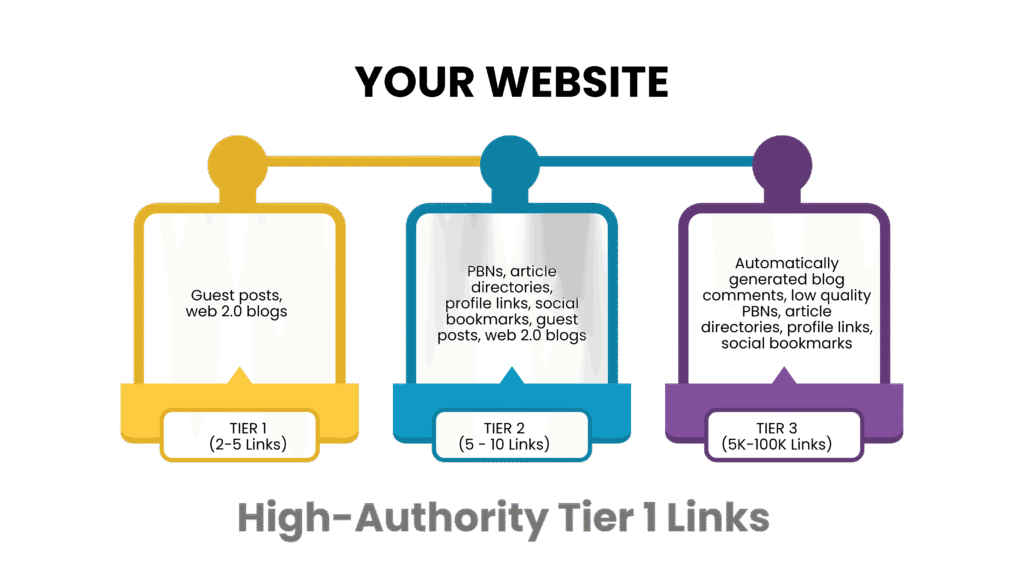
Tier 1 links form the backbone of your strategy. They sit on credible industry platforms, analyst blogs, and reviewer websites. These are spaces where purchasing decisions are actually shaped. Securing them isn’t about outreach volume but precision.
At this stage, outreach cannot rely on volume or generic pitches. What earns placement is having substantial information. Be it original research, sector-specific analysis, or practical guidance that stakeholders find useful. Tier 1 links established in this way become long-term references. They maintain visibility and trust over time, rather than fading after a campaign.
- Build the Tier 2 Ecosystem
Once Tier 1 placements are secured, link building specialists must ensure they get the right influence. Tier 2 links further place these Tier 1 links in resource lists, industry roundups, and mid-tier publications. Their focus isn’t on building volume but on strengthening discoverability and relevance instead.
When these references circulate across professional forums, niche communities, and social platforms, Tier 1 links gain greater visibility and longer shelf life. This layer acts as reinforcement. It makes sure that the highest-value backlinks continue to attract attention, authority, and engagement long after the initial placement is made.
- Tier 3 Support
Tier 3 links keep the ecosystem in motion. They don’t connect to your revenue pages but to tier 2 assets stretching their visibility and shelf life. Tier 3 of link building of them as circulation channels. Mentions in professional forums, Q&A platforms, or reputable directories keep Tier 2 content discoverable. Their reliability may be lighter, but their consistency signals activity that search engines recognise as natural.
Disciplined manual contributions build relevance over time. Unlike automated blasts, which leave obvious footprints, carefully managed Tier 3 signals create momentum that compounds upward, protecting your foundation while ensuring sustained visibility.
Instead of chasing endless backlinks, tiered link building focuses on strengthening the right ones. It’s a strategy that scales with your store and turns links into assets that keep working year after year.
The Bottom Line
For eCommerce brands, backlinks have shifted from being technical add-ons to becoming strategic assets. A structured, tiered link building plan ensures that every link contributes to visibility, authority, and long-term growth. Tier 1 placements provide the backbone by being cited on credible industry sources. Tier 2 links reinforce those foundations, while Tier 3 keeps them active and visible in wider networks. Together, these layers mirror how digital trust grows naturally, through publishing, citation, and circulation.
Outsourcing this process gives businesses a sharper edge. Specialists know how to identify high-value opportunities, insulate risk, and build ecosystems that scale across thousands of SKUs. Instead of chasing random backlinks, brands gain pathways to attract qualified buyers and strengthen conversions.
In a crowded eCommerce market, tiered link building is not just an SEO tactic but a competitive advantage, one that compounds value year after year.
FAQs
How does manual link building fit into tiered strategies?
Manual link building is the foundation of tiered strategies. It secures high-quality Tier 1 placements on trusted sites for relevance and authority. Once these anchors are in place, Tier 2 and Tier 3 links are used. A layered system is created that compounds visibility and conversions over time.
Can tiered strategies be scaled for very large eCommerce stores?
Yes. Tiered link building scales for large eCommerce stores by focusing Tier 1 links on high-value categories or flagship products, not every SKU. Tier 2 and Tier 3 layers then expand reach and maintain visibility, creating a system that grows alongside catalogues.
Yes. Tiered link building scales for large eCommerce stores by focusing Tier 1 links on high-value categories or flagship products, not every SKU. Tier 2 and Tier 3 layers then expand reach and maintain visibility, creating a system that grows alongside catalogues.
Which pages should Tier 1 links target in eCommerce sites?
Tier 1 links should target pages with the highest business impact like bestsellers, seasonal launches, or long-form resources like buying guides. These “power pages” combine strong keyword potential with clear revenue value. Every backlink earned drives both qualified traffic and measurable conversions.
What are common mistakes in tiered link building for eCommerce?
Common mistakes include over-using automated Tier 3 links, sending low-quality links to the main site, neglecting anchor diversity, or failing to refresh and audit older tiers. Each error can dilute authority flow or trigger algorithmic scrutiny. Careful control and review is vital.
Why is tiered link building safer than traditional link building for eCommerce?
Tiered link building reduces risk by keeping weaker or experimental links away from money pages. Tier 1 placements connect directly to high-value assets, while Tier 2 and Tier 3 layers provide reinforcement and visibility
- Your cart is empty Browse Shop
DISCUSS NEW PROJECT OR JUST TO SAY HELLO GET IN TOUCH WITH US
info@Fastlinko.com
+91-9990725969
200 Park Home Avenue
M2R 1A2 North York, ON, Canada
© Fastlinko 2025 . All rights reserved, Rankfast

